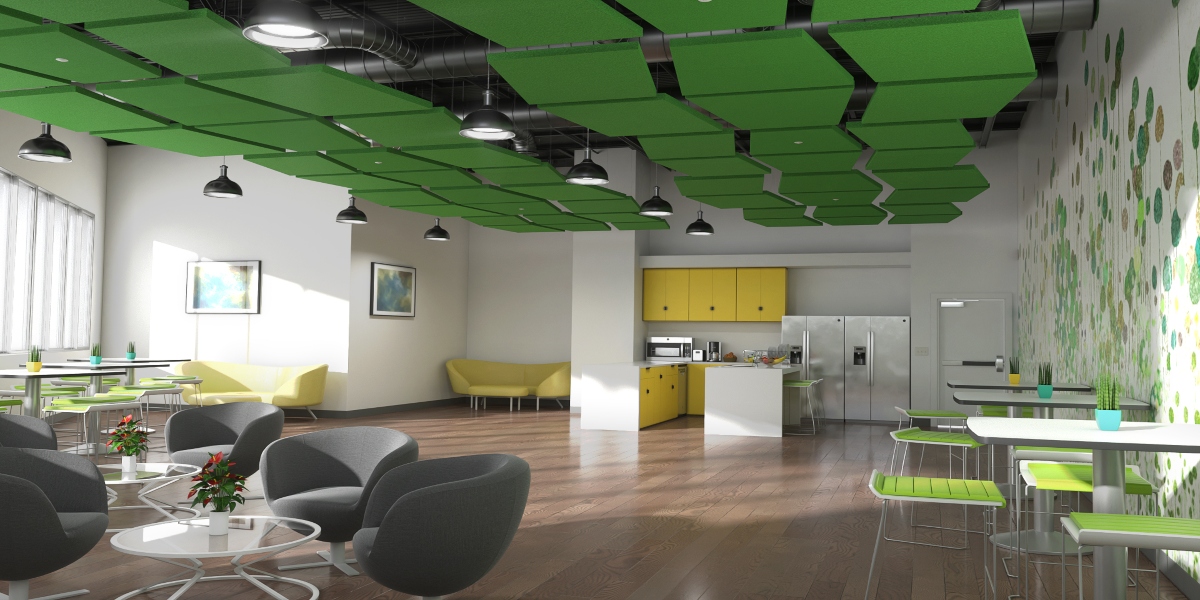Architectural Sound Absorbing Panels

In architecture, “acoustics” refers to enhancing environmental sound. Although it’s a complicated science, it’s much simpler than you might believe to grasp the fundamentals and making wise selections.
The first step is realizing that soundproofing and acoustic treatments are two distinct technical categories utilized in acoustics. The terms “reduced noise” and “better sound” refers to soundproofing.
Soundproofing is frequently used in recording studios for music, but it can also be used in areas close to busy streets, schools, work zones, or even the neighbours of drummers.
Soundproofing a space is similar to weather-proofing; therefore, the building should be as sturdy as possible with no gaps or cracks.
Increase the structural mass of the walls, floor, and ceiling, cover the air gaps around doors and windows, and create openings for any electrical outlets. It is required to limit the noise entering and leaving a room.
How much noise is outside and how much noise reduction you desire inside will determine the scope of the implemented steps.
What is meant by the term “acoustics”?
The Greek term “akoustikos,” which means “of or for hearing, ready to hear,” is the root of the English word “acoustic,” which also implies audible or heard.
“Acoustics” is an interdisciplinary field focused on all mechanical waves, including sound, vibration, ultrasound, and infrasound. Acoustic generally refers to something that has to do with sound.
In music halls or auditoriums, for example, acoustic panels control the direction of the sound.
Do sound-absorbing panels work?
Architectural sound-absorbing panels work in a variety of areas. Acoustic panels can be used for a lot of different functions. They can be installed in theatres, auditoriums, radio stations, television stations, restaurants, boardrooms, conference rooms, and any other area where one wishes to control the degree of sound.
To make a room soundproof, acoustic panels can be mounted on the ceiling, the walls, or the ground. This implies that no sound will be allowed to enter or leave that room. The aesthetics of these panels are created to blend in with the decor of any space that needs soundproofing.
What are the types of architectural sound-absorbing panels?
You may find a selection of acoustic panels to match any situation, whether you’re buying online or in a physical store. You can choose the acoustic panel’s material depending on the atmosphere you wish to create. Here are a few of the aesthetically pleasing acoustic panel options available.
Acoustic panels with fabric wrapping
In various settings, including restaurants, studios, sound recording rooms, conference rooms, etc., fabric-wrapped acoustic panels dampen sound and reduce noise.
Cotton or any other material that absorbs sound can be used as the fabric for these panels. Recycled cotton items are typically used to lower a room’s background noise levels.
These panels also help reduce excessive room reverberation. Furthermore, these panels are offered in a variety of colours and thicknesses.
PET acoustic panels
PET acoustic panels are a sound-absorbing material made from recycled plastic bottles, designed to improve acoustics and reduce noise in various settings.
These acoustic panels can be customized to a specific colour depending on the look and feel of the space in which you are looking to install them.
Additionally, this is the material that Altispace acoustic products are made out of.
Acoustic foam panels
Another excellent choice for superior sound absorption in any application is acoustic foam panels. These come in various colours, surface designs, and thicknesses.
Acoustic foam has the benefit of being lightweight and a fibre-free alternative for other kinds of acoustic panels.
Metal panels for acoustics
In noisy spaces like gyms, swimming pools, pump rooms, and other industrial work areas, metal acoustic panels with encapsulated auditory fill function well as installation walls. These can be ordered in any shape or colour to match the space’s décor.
Acoustic wood panels
Another excellent material for acoustical panels is wood. The panels’ quality and durability are provided by timber and wood veneer. It is possible to mount these wooden panels on walls and ceilings. Wooden acoustic panels not only reduce noise well but also enhance the aesthetics of the interior space.
What are the benefits of architectural sound-absorbing panels?
Acoustic panels are the answer to dampening sound in your educational or commercial space. As a result, the main benefits of acoustic panels are that they are effective at absorbing sound and minimizing echo.
A further benefit of acoustic panels is that they can be easily installed without requiring significant alterations to the interior décor.
The technical and price ranges for the acoustic solutions are extensive. So long as it falls within your budget, you can choose any preferred acoustic panelling solution. However, speak with experts for the best guidance on sound quality solutions.
Why use Altispace’s services to purchase architectural sound-absorbing panels?
Altispace is a well-established manufacturer of acoustic products in Canada. The sound-absorbing ceiling panels, which are composed of high-quality materials, come in a variety of options.
Due to their practical engineering and production processes, they offer reasonable architectural acoustic ceiling products that can be easily installed in your space.
The best part is that our acoustic products are highly customizable and arrive in a short lead time, allowing you to develop your original design concepts quickly and effectively while also increasing the look and functionality of your cloud space.
Back
 Proud Member of ARCAT
Proud Member of ARCAT